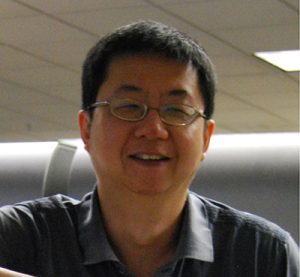
Dr. Kang Xu
ECS’s San Francisco Section is proud to hold its third section meeting of 2019 with invited guest speaker Kang Xu, who will present his talk:
Before Li-Ion Batteries, and Thereafter…
Kang Xu
Electrochemistry Branch, U. S. Army Research Laboratory,
Adelphi, Maryland, 20783, USA
When: Tuesday, July 30th, 2019
Time: 6:00 P.M.
Where: Le Bateau Ivre
2629 Telegraph Ave, Berkeley, CA 94704
Free participation, $40 flat fee for dinner
Plan to attend? RSVP: sfsectionecs@gmail.com
About Kang Xu
Kang Xu has been working on electrolyte materials for 30 years. His interests encompass materials synthesis and interphasial mechanisms in electrochemical energy storage devices. His work on high voltage aqueous electrolytes was considered disruptive, which opens new horizons to next generation of aqueous batteries. He has published 200+ papers, four chapters/books, and currently holds 20+ patents. Among those, he is best known in the field for the two comprehensive reviews written for Chem. Rev. (2004 and 2014), which have been extensively regarded as desk-references by the community.
His work has been cited over 20,000 times with h-index of 73. He has been recognized 20 times for numerous awards, including the 2017 International Battery Association Technology Award and the 2018 Electrochemical Society Battery Research Award. He is co-founder of Center of Research on Extreme Batteries (CREB), advisory board member of the ACS Applied Materials and Interfaces, associate editor of Energy & Environmental Materials and Electrochemistry, and guest-editor of ECS’s Interface spring thematic issue.
Abstract
As one of the most prominent technologies in human history, Li-ion batteries (LIBs) have significantly reshaped our life since their initial commercialization in early 1990s, while continuous improvements in materials and chemistries of their derivative descendants might dictate our energy future. Unlike many scientific discoveries, LIB was not born at a single “Eureka” moment. Battery (or any electrochemical device) is a system consisting of multiple components. For such a system to function, all components must be electrochemically synchronized. The lengthy history of LIB development witnessed such painful synchronization, which proceeded simultaneously with the development of intercalation science as well as its many individual components.
This talk aims to recount the history between the discovery of Li element to the commercialization of LIB in 1990s. As taught by Winston Churchill: “The farther back you can look, the farther forward you are likely to see.” Such historical retrospective brings us inspiration and insight into the future because being able to scrutinize the antique literature with contemporary hindsight offers us the advantageous angle to witness how accidental discoveries, intentional breakthroughs, and deceiving misconceptions interplayed to generate the unique chemistries and materials for such a sophisticated electrochemical device.

